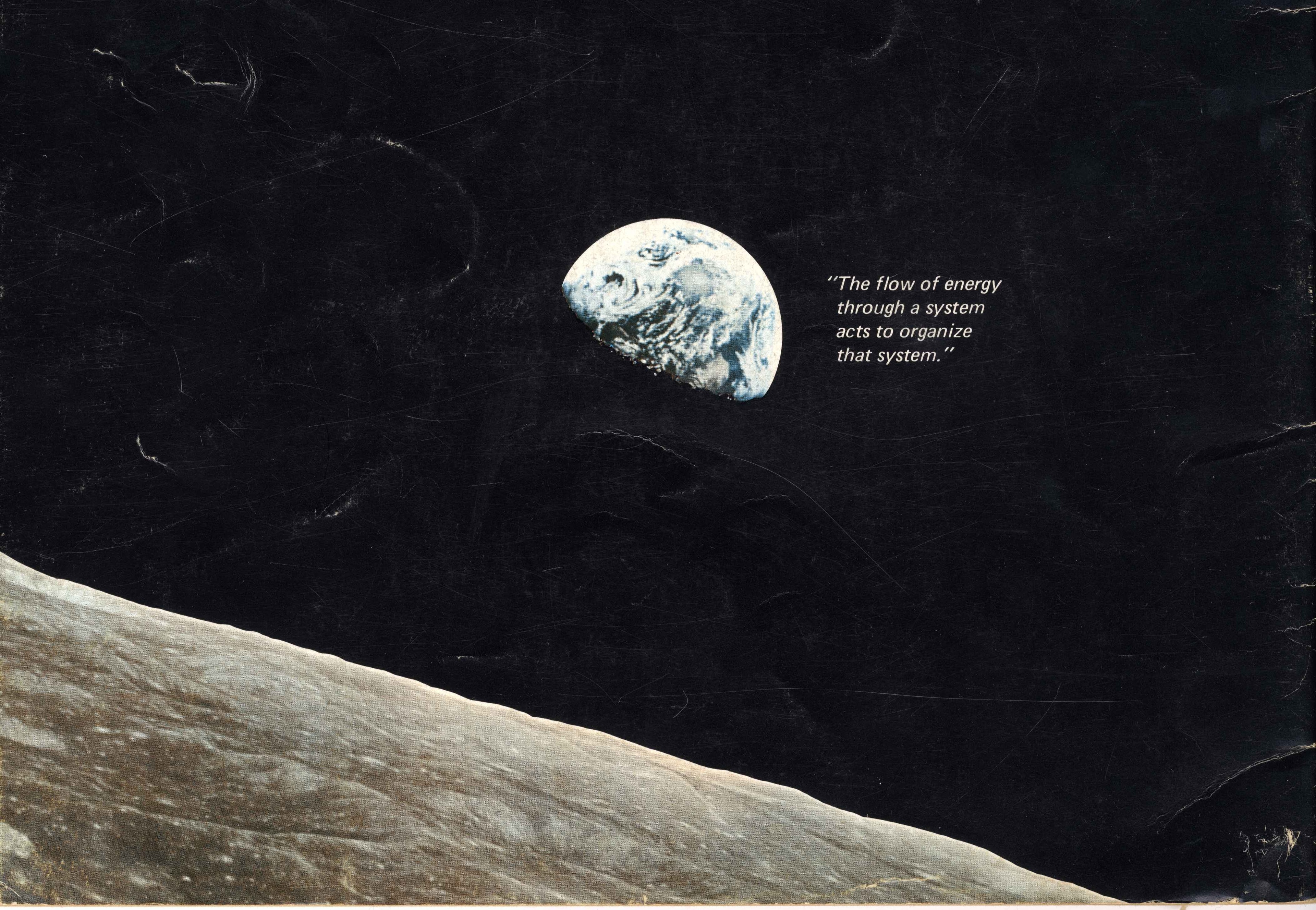The Whole Earth
In today's media landscape, a book review is often a slap on the back. A handshake among colleagues that says, “well done.” But we have never been afraid to offer critique when critique is due. In our print section Berlin Reviews, we've always tried to take the propositions of a book seriously and push them to their extremes.
Archive Berlin Review from our issue #25.

“Find your place in space”. — Whole Earth Catalog, July 1970
The Apollo 8 mission in 1968 was the first manned spacecraft to leave Earth’s orbit, reach the Moon, orbit it, and safely return to our planet. The vessel flew in what’s called the “barbecue roll,” turning 360 degrees like a hotdog on the grill as it propelled forward, which ensures equal temperature distribution across the spacecraft while also revealing a panoramic view of the cosmos. It was the first time in history our Blue Planet was viewed by humans, and the aesthetic experience was unprecedented. “The size of it, the significance of it – it becomes both things, it becomes so small and so fragile, and such a precious little spot in that universe,” astronaut Rusty Schweickart said in 1972. “You can block it out with your thumb, and you realize that on that small spot, that little blue and white thing is everything that means anything to you.” The image induced what’s known today as the Overview Effect, a revelation that we are only part of a tiny vulnerable ball of life that hangs in a void. Freud called this experience the “oceanic feeling,” a non-localized meaning that is outside of history and is limitless. Others might simply refer to it as a religious experience.
The writer and editor Stewart Brand understood the potency of such an image before it was seen. Brand founded Whole Earth Catalog the same year as Apollo 8, and it’s become the central document and archive of the Californian counterculture. An inexhaustible publication – Victorian even in its design – Whole Earth Catalog presaged the Internet with its how-to-manuals, opinionated life guides, and readers’ recommendations on everything from computational phsyics and drug busts to animal husbandry. Brand not only invented the term “personal computer” and inspired a whole generation to “stay hungry, stay foolish,” he also sold thousands of but- tons to the American public in 1966 for 25c, which asked, “Why haven’t we seen a photograph of the whole Earth yet?”

The Whole Earth: California and the Disappearance of the Outside explores how the Earthrise image transformed our understanding of culture, nature, and technology. Using Brand’s Whole Earth Catalog as its primary source, it tells the story of how we were propelled from territorial expansion into an inward intensification, most significantly in psychedelia and computer culture, psychology and technology, LSD and Buckminster Fuller. It was these new sensibilities, which were in search of outlaw areas of production, that turned California into the center for the Civil Rights movement, neoliberalism, environmentalism, and self-transformation – a geographical rendevous between capitalist modernity and today’s information society, and a breeding ground for the contradictions of popular culture.
While many today view these countercultural ideologies and social upheavals with romantic imprudence – perhaps because there’s not enough distance from our recent past – The Whole Earth: California and the Disappearance of the Outside examines them more critically. Seeing the Earth in its entirely may have cemented the reality of a global awareness, but the promise of redemption and planetary unity has proven illusory. What’s emerged instead is a consciousness of the age of the “Anthropocene,” a new geological era marked by human influence. Human behavior on Earth has changed the atmosphere and lithosphere so significantly it constitutes new nomenclature. Mankind, the environment, and technology have begun to create a new form of nature and enter into a permanent relationship that is neither stable nor unstable, but rather “multistable.” The alliance of technological determinism with holistic lifestyle goes hand in hand with the “disappearance of the outside,” yet so does, it seems, our ability to explain life on the surface.

The Whole Earth: California and the Disappearance of the Outside is edited by Anselm Franke and Diedrich Diederichsen and published by Haus der Kulturen der Welt and Sternberg Press (Berlin, 2013).

